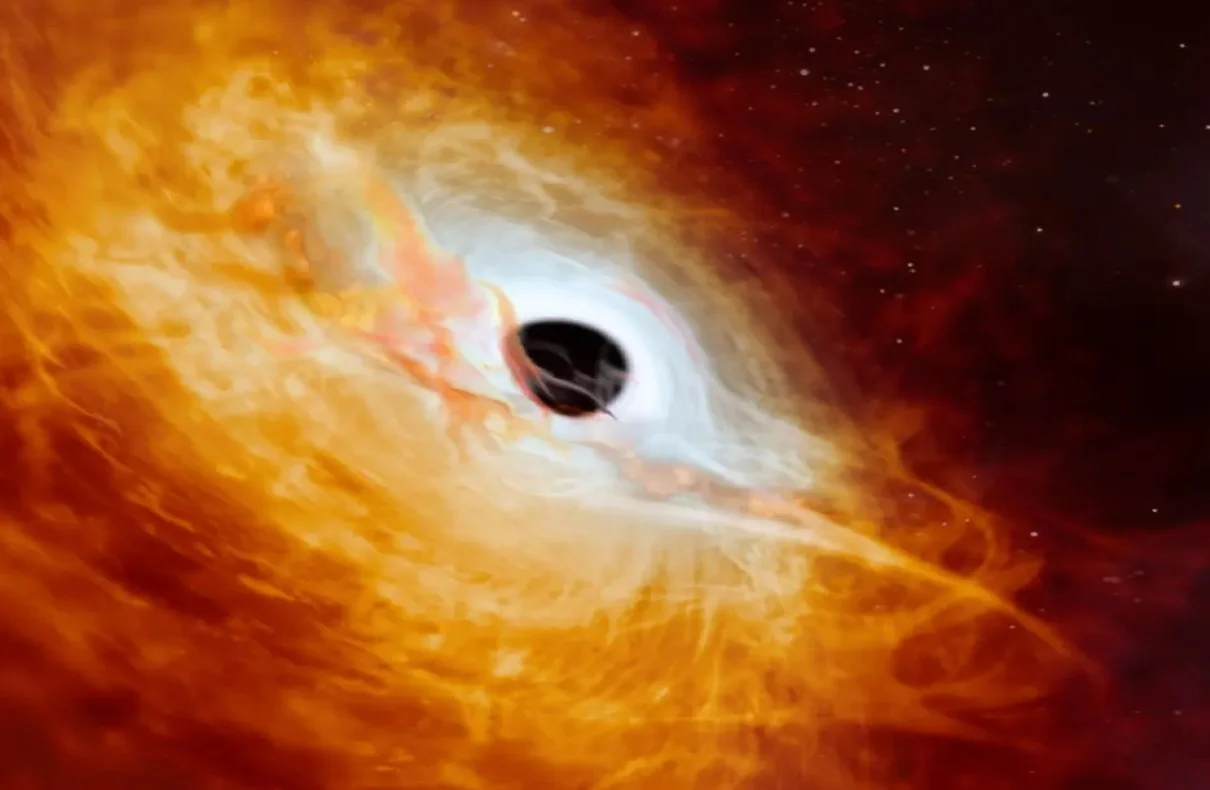
Astronomers have recently made an astonishing discovery that has left the scientific community in awe. They have unveiled the brightest object ever observed in the universe—a quasar powered by a voracious black hole. This incredible celestial phenomenon shines with a luminosity that is 500 trillion times brighter than our sun. The sheer magnitude of this quasar is mind-boggling, and its discovery opens up new avenues for understanding the mysteries of the cosmos.
The light from this remarkable quasar has traveled for more than 12 billion years to reach our telescopes on Earth. This means that the observations we are making today provide us with a glimpse into the distant past, allowing us to witness the universe as it was when it was just a fraction of its current age. This is a testament to the immense scale of the universe and the incredible capabilities of modern astronomical instruments.
Astronomers Unveil the Brightest Object in the Universe: A Quasar Powered by a Voracious Black Hole
The discovery of this extraordinary quasar is the result of the collaborative efforts of scientists from various research institutions around the world. Australian National University scientists were the first to spot this cosmic marvel using a 2.3-meter telescope. However, it was the subsequent observations and analysis from telescopes in Australia and Chile’s Atacama Desert that confirmed its true nature as a quasar.
Quasars are among the most energetic and luminous objects in the universe. They are powered by supermassive black holes that reside at the centers of galaxies. These black holes have masses that are millions or even billions of times greater than our sun. As matter falls into these black holes, it forms an accretion disk—a swirling disk of superheated gas and dust. The intense gravitational forces generated by the black hole cause the material in the accretion disk to emit vast amounts of energy in the form of light and other electromagnetic radiation.
This newly discovered quasar, which has been designated J0529-4351, is truly an extreme object. The black hole at its center has a mass more than 17 billion times that of our sun. It is currently growing at an astonishing rate, devouring matter equivalent to the mass of an entire sun every single day. This makes it the fastest-growing black hole ever observed. The luminosity of this quasar is unparalleled, outshining any other known celestial object by a factor of 500 trillion.
While the quasar may appear as a mere dot in images, it is a cosmic hurricane of activity. The rotating accretion disk surrounding the black hole is a maelstrom of swirling gases and matter, creating a tempestuous environment. This quasar is considered to be the most violent place in the universe, with energy outputs that dwarf anything we have ever encountered.
What makes this discovery even more remarkable is that the quasar was hiding in plain sight for decades. Initially spotted during a sky survey by the European Southern Observatory in 1980, it was mistakenly classified as a star. It was only in recent years, thanks to advancements in observational techniques and data analysis, that astronomers were able to identify it as a quasar. This serves as a reminder of how much we still have to learn about the vast expanse of the cosmos.
NASA Shares Latest Stunning Pics of Earth Taken From Space
The newly discovered quasar is located 12 billion light-years away from Earth, which means we are seeing it as it appeared when the universe was only a fraction of its current age. By studying objects like this, astronomers can gain valuable insights into the early universe and its evolution over billions of years. These observations provide a window into the past, allowing us to piece together the puzzle of cosmic history.
Astronomers continue to study this extraordinary quasar in the hopes of unraveling its secrets. They are keen to understand the mechanisms that drive its incredible brightness and the processes that enable the black hole at its core to grow at such an astonishing rate. By delving deeper into the mysteries of quasars, scientists aim to further expand our knowledge of the universe and shed light on the fundamental forces that shape its existence.
The discovery of this exceptionally bright quasar has significant implications for our understanding of the cosmos. It provides crucial data that can help refine cosmological models and theories about the formation and evolution of galaxies. By studying the extreme conditions present in this quasar, scientists can test the limits of our current understanding of astrophysics and push the boundaries of our knowledge.
Discoveries like this capture the imagination of people around the world and inspire future generations of scientists and astronomers. They remind us of the vastness and beauty of the universe and the endless possibilities that await exploration. The quest to understand the cosmos is an ongoing journey, and with each new discovery, we come closer to unraveling the secrets of the universe.
